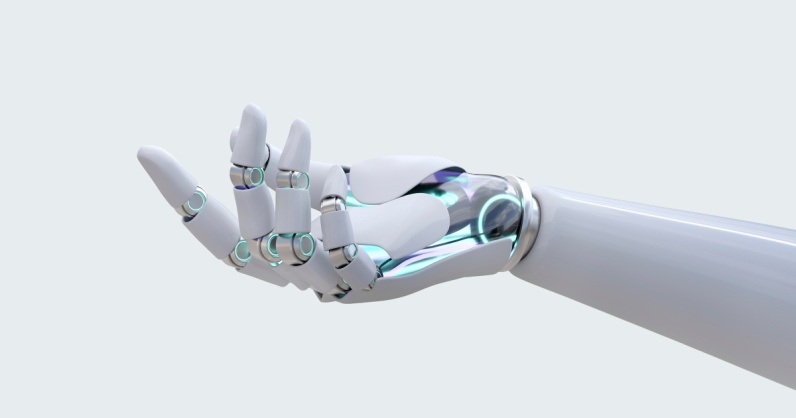Science Fiction Day

The emergence of English dictionaries in the 17th century was partly a response to the rapid influx of new “hard words” from the emerging disciplines of modern science. Scientific discovery continues to be a fascinating source of neologisms, and in recent decades the derivative field of science fiction has shown itself to be particularly forward-looking and inventive, since sci-fi writers sometimes need words for things that don’t even exist (at least at the time of writing). This month’s Word Stories instalment looks at a few far out coinages from science fiction that have turned out to be right on the money.
robot
In 1920, Karel Čapek produced a play called R. U. R., an initialism for Rossumovi Univerzální Roboti, or Rossum’s Universal Robots (both subtitles appeared in the Czech original). He had been toying with labori as a name for the story’s mechanical workers (based on the Latin word for doing physical work, laborare), but his brother suggested trying robot instead, based on the old Czech robota (“forced labour” or “drudgery”), and the modern commonplace of the robot as a lifelike worker machine was born.
Whether Čapek knew it or not, English speakers versed in Eastern European politics had already borrowed the word robot from German as an uncountable noun meaning “forced labour” (derived from the same Slavonic roots as the Czech robota). For this reason, one can find sober old publications printing sentences like “The Austrian Government has suppressed the robot” (The North British Review, February 1855). This independent early career of the word robot was relatively obscure, though, and when Čapek’s popular play got picked up in English by the BBC, robot became a household word inseparable from the image of intelligent, autonomous machines.
The science of robotics also got its name from science fiction (in Isaac Asimov’s 1941 work Liar!), as did robot’s modern slang truncation bot (or ’bot). In the popular sci-fi of the 60s and 70s, robots were sometimes casually called bots, and the word was applied in the 90s to programs that work like virtual machines in doing automatic drudge work (one notable example being the mass impersonation of human users on social media platforms).
astronaut
Astronaut first appeared in print as the name of the exploratory space vessel in Percy Greg’s epic science fiction novel Across the Zodiac (1880), presumably as a spacefaring literary nod to the far-wandering Argonauts of Greek mythology. The Argo was the sea vessel that carried Jason on his quest to find the Golden Fleece, and the Argonauts (Greek Argonautai) were the sailors (nautai) on the Argo. By substituting the prefix astro- (from the Greek root astēr meaning “star”) for Argo-, Greg’s Astronaut evoked the image of a new kind of sailor among the stars.
The modern use of the term astronaut describes a pilot or passenger in a spaceship, as opposed to the vessel itself. The usage was popularized in the 1920s and 30s, likely inspired by the French coinages astronaute (“astronaut”) and astronautique (“astronautics”) attributed to science fiction pioneer J.-H. Rosny, Sr. At first, some publications printed astronaut in scare-quotes as “astronaut”, as a way to deal with the staggering novelty and strangeness of the mere idea (Journal of the British Astronomical Association, June 1929; E. G. Richardson, Physical Science in Modern Life, 1938). If humans ever do take long trips among the stars, though, the name is likely to be almost prophetically apt: some leading proposals for making such travel possible depend upon harnessing the energy of light with solar sails.
alien
The popular image of aliens as technologically advanced travellers from other planets is a recent historical development, but the roots of the word alien itself are quite ancient. The Classical Latin adjective alienus meant “strange” or “foreign”, based on the Latin root alius (“other”) that also lies behind words like alias. In keeping with Latin’s tendency to use adjectives nominally, aliēnus also appears very early on as a noun meaning “stranger” or “foreigner”.
French followed the Latin pattern by experimenting with aliene as an adjective meaning “strange/foreign” in the 11th century, and extending it to nominal use denoting “a stranger/foreigner” in the 12th. In the 14th century, English followed suit, as seen in the 1382 Wycliffe Bible’s adjectival reference to the alien gods (“alyen goddeȝ”) of the heathen, and the 1384 Wycliffe Bible’s nominal reference to the children of others as the sons of aliens (“sones of alyenys”).
In the 20th century, the new interplanetary connotations of the word alien emerged along the same lines in the world of science fiction, as the word came to be used as an adjective describing extraterrestrials (J. Williamson, Scientific Wonder Stories, July 1929) and then a noun meaning “an extraterrestrial” (N. Schachner & A. L. Zagat, Wonder Stories, August 1931). The more general ancient sense of foreignness associated with aliēnus survives today in terms like alien flora (biology) and legal alien (international law), but when people talk about aliens or alien life forms in everyday modern English, they almost always mean extraterrestrials.
teleport/teleportation
The verb teleport and the noun teleportation first appeared in the speculative fringe science of C. H. Fort’s 1931 book Lo!, which suggested that many of the world’s unanswered questions can be explained by a mysterious “cosmic joker” who sometimes transports things between worlds as if by magic. Fort’s coinage adapts the words transport and transportation by removing the prefix trans- and substituting tele-, a prefix derived from the Greek tēle meaning “distant” and associated with the ultra-fast unseen transmission involved in the telegraph (coined in the 1790s), the telephone (1830s), and the television (1900s).
The worlds of science fiction and fantasy embraced Fort’s inventive words for such an imagined ability to move from point A to point B without having to actually trudge through the distance between—as seen for example in the famous “transporter” technology featured in the Star Trek television series.
In 2014, teleportation itself materialized as if by magic in the real world, when researchers in the Netherlands used a phenomenon called quantum entanglement to move data from one machine to another without sending any kind of signal across the distance between them. They dubbed the amazing feat quantum teleportation (R. Hanson et al., “Unconditional Quantum Teleportation between Distant Solid-state Qubits”, 2014).




